
Starbucks Case Study

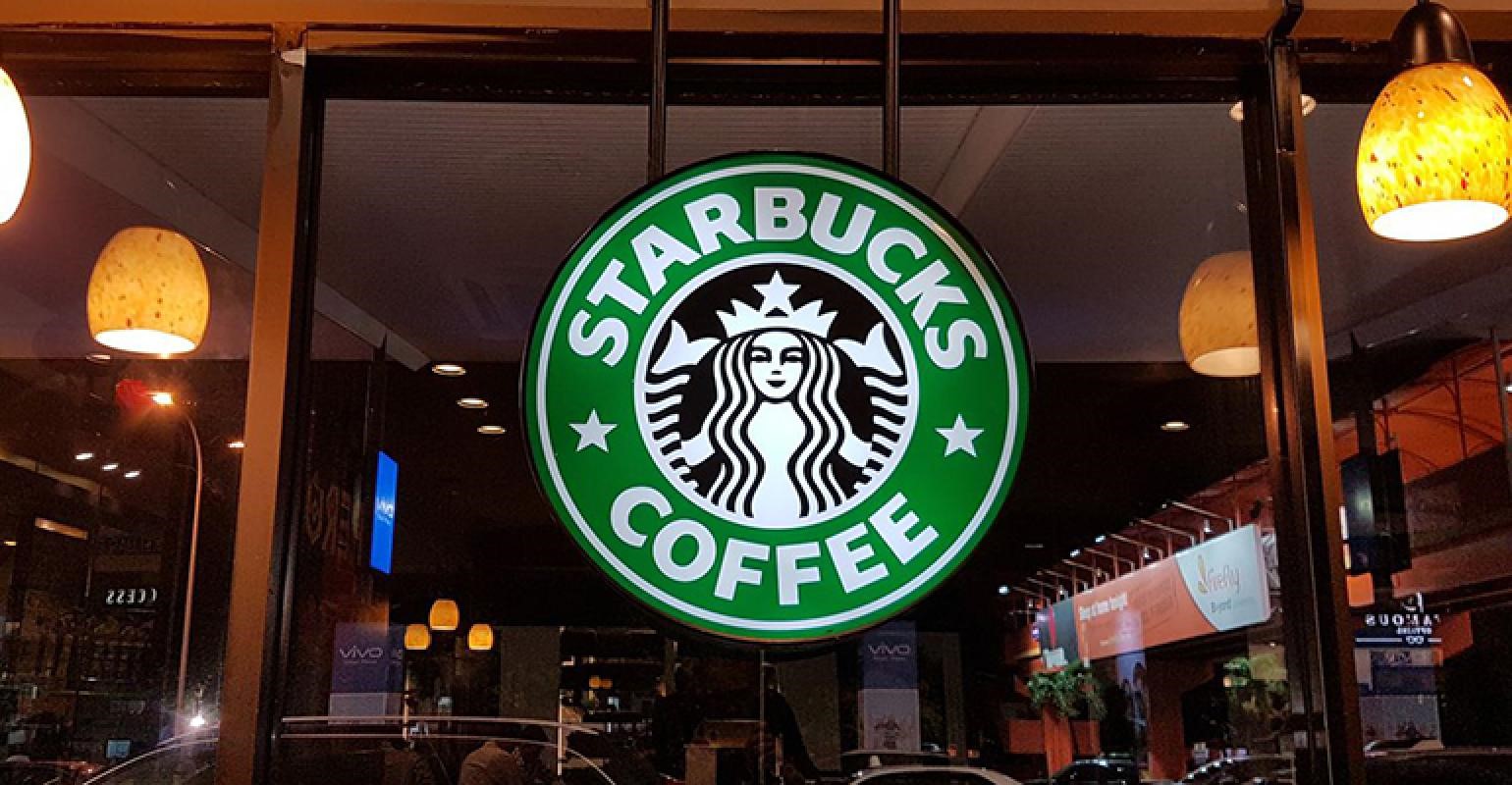
Introduction:
Starbucks based in Seattle, Washington is a multinational chain of Coffeehouse that was established in 1971. As of early 2020, it has a presence in more than 30,000 locations across 70 countries worldwide.
It is one of the most respected brand winning awards such as:-
- Best Business
- Most Admired Company
- 100 Best corporate Citizens
At one point, Wall Street depicted STARBUCKS as the “Third Place,” following the notion of it being a gathering spot beyond home and work.
Starbucks coffee houses serve-
- Hot and cold drinks
- Whole-bean coffee
- Micro ground instant coffee known as VIA
- Espresso
- Caffe lattes
- Full- and loose-leaf teas including Teavana tea products
- Evolution Fresh juices
- Frappuccino beverages
- La Boulange pastries
- Snacks including items such as chips and crackers
- And also some offerings which are seasonal or specific to the locality of the store.
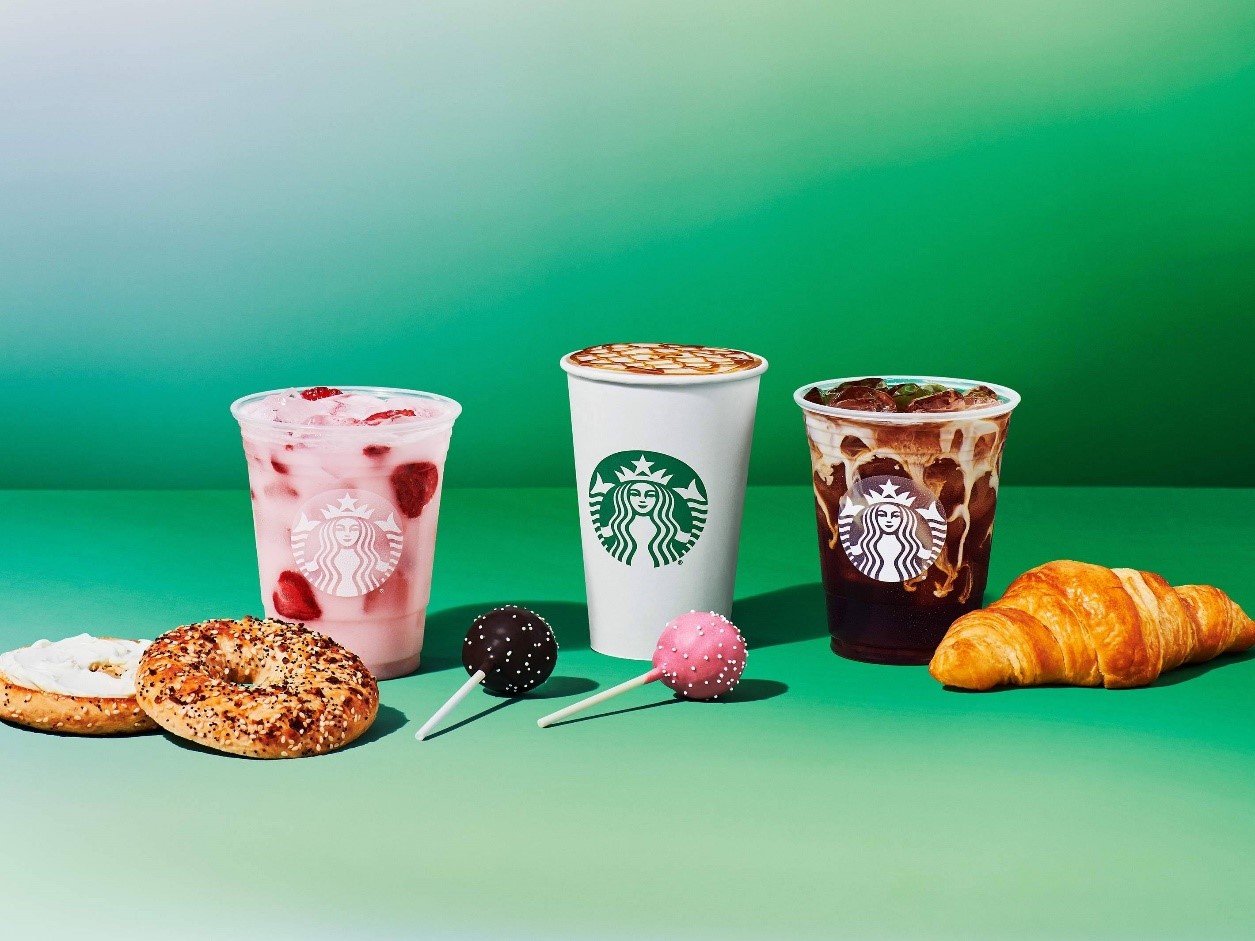
Company Highlights:
STARTUP NAME | STARBUCKS |
Headquarters | Seattle, Washington, United States |
Sector | Food and Beverage, Hospitality |
Founders | Gordon Bowker, Jerry Baldwin, Zev Siegl |
Founded | 1971 |
Valuation | $148.83B (January 2022) |
Revenue | $29.02B (FY21) |
Total Funding | $900 million |
History of Starbucks
The first Starbucks was opened in 1971. The name is inspired by Moby Dick’s first name. Three individuals’ English instructor Jerry Baldwin, history educator Zel Siegel, and writer Gordon Bowker collaborated to establish Starbucks Coffee, Tea, and Spice in the bustling Pikes Place Market, known for its tourist attractions, situated in Seattle. Specializing in high quality coffee the company grew to be the largest roster in the Washington and opened their stores in multiple location in early 80’s. In 1981, Howard Schultz, the vice president of U.S operations for Swedish Maker decided to pay Starbucks a visit, impressed with the company management and quality of products, he recognized a great opportunity and began working with the founder Jerry Baldwin. The company experience rapid growth in 1992 and growing tenfold by 1997, with locations around the United States, Singapore and Japan.
Today according to Starbucks website he have 38,038 stores worldwide (as of 2023).
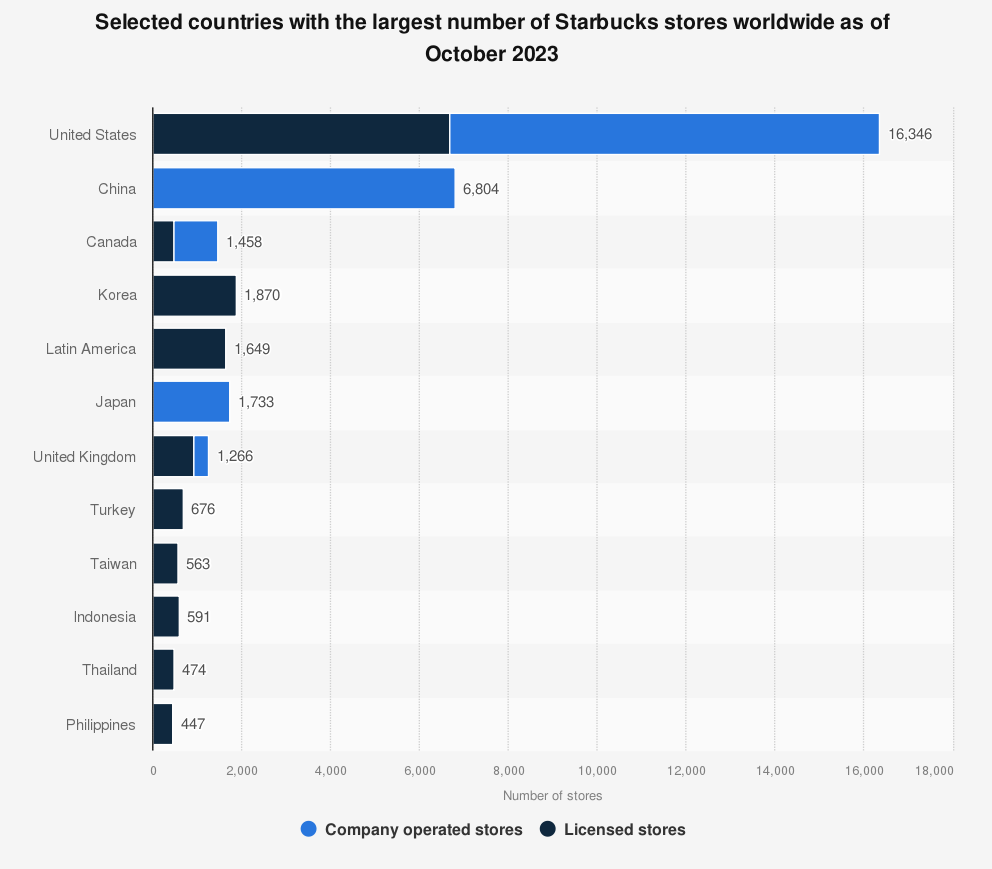
Starbucks in India
In January 2011, Starbucks Corporation and Tata Coffee reported to start opening Starbucks outlets in India. In 2007, Starbucks announced its entry into India, but it withdrew without providing any explanation for its decision.
It was October 19, Starbucks opened its first store in Mumbai. In 2013, Starbucks opened its first cooking and bundling plant in Karnataka. In 2013, Tata Global Beverages announces its plans to establish 50 outlets by the end of the year, investing $58 million in the venture. The company achieved its goal by opening its 50th store in India on July 2014.
Marketing Strategy of Starbucks in India
Initially, Starbucks marketing strategy in India was segmenting consumer on social and economic basis. Starbucks further divides its market by geography and demographics, strategically locating stores in areas where they can reach their intended target audience.
Starbucks faces tough competition in India’s organized coffee market, lacking any first mover advantage. Café Coffee Day (CCD) leads the market with Barista Lavazza being the pioneer in opening coffee chains. Costa Coffee, Coffee bean and Tea Leaf (CBTL) AND Gloria Jean are preferred by the affluent segment in India.
Starbucks has utilized its strategy to establish its distinctive market position for its products, emphasizing the overall differentiated experience offered by the brand. They have positioned themselves as a highly esteemed brand.
Starbucks Target Market
Starbucks is recognized as a high end coffee brand catering to customers from the upper echelons of the economic spectrum, including the upper middle class and upper class. These are mostly the high wage earning professionals or business owners or other higher end customers from the age group of 22-50 years. Starbucks targets both male and Female customers, with the significant portion falling within the 25-45 age bracket, particularly urban, health conscious and discerning consumers.
In summary, Starbucks aims its marketing efforts towards:
- Affluent consumers willing to spend more
- Urban individuals with busy lifestyles
- Early adopters of technology
- Health-conscious professionals
- Individuals adaptable to change
- Extending beyond traditional storefront customers
Starbucks Social Media Strategy
Most people are familiar with Starbucks in social media. The company’s numerous social media profiles are recognized for their unique branding, engaging post and visually appealing content.
Starbucks’ approach to social media stands out due to its focus on customer experiences. By weaving storytelling into their content, Starbucks seamlessly showcases its products and integrates them into customers’ lives.
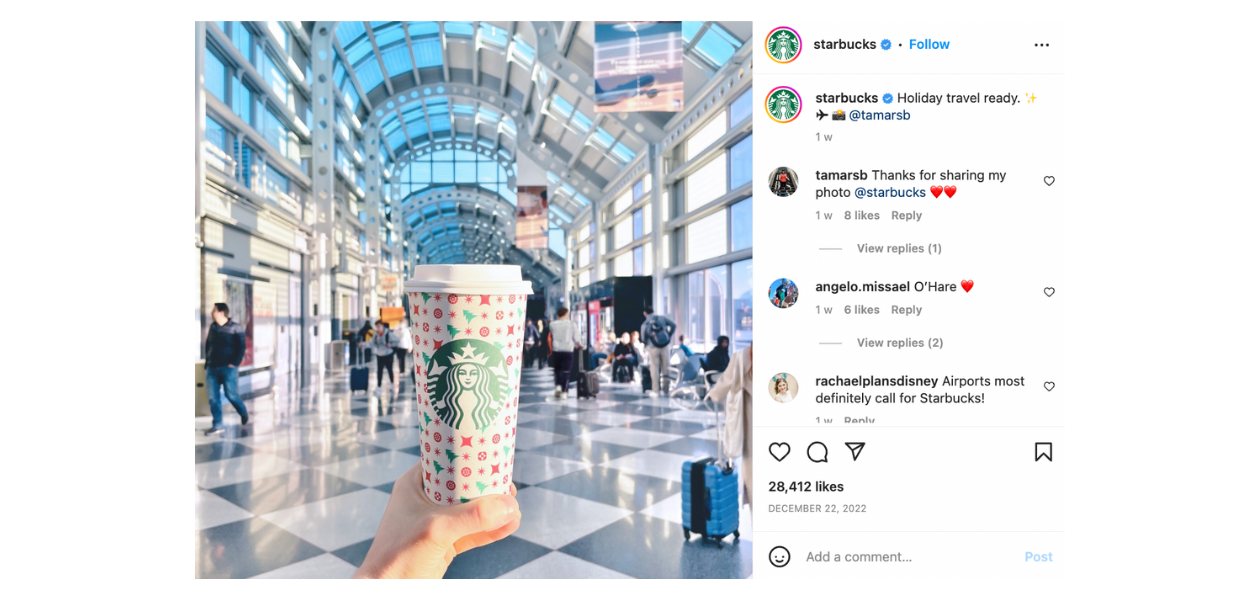
Here’s a look at Starbucks’ main account and follower counts.
- Instagram: 18 million followers
- Facebook: 36300608 likes (34005 talking about this · 1030419 were here)
- Twitter: 172.3k followers
- LinkedIn: 2659357 followers
- TikTok: 10.3 million likes, 2.3 million followers
- YouTube: 374K subscribers 669 videos
Starbucks community based Campaign
This promotional campaign is run by the Starbucks also known as the Starbucks holiday cup. During the winter season, certain hot beverages served at Starbucks outlets are presented in cups featuring a red background adorned with festive designs, departing from the usual white cups. Each year brings new designs. Additionally, Starbucks has utilized this campaign to contribute to HIV/AIDS research. Take a look at the #RedCupArt campaign, which not only increases engagement but also provides them with a library of UGC content.
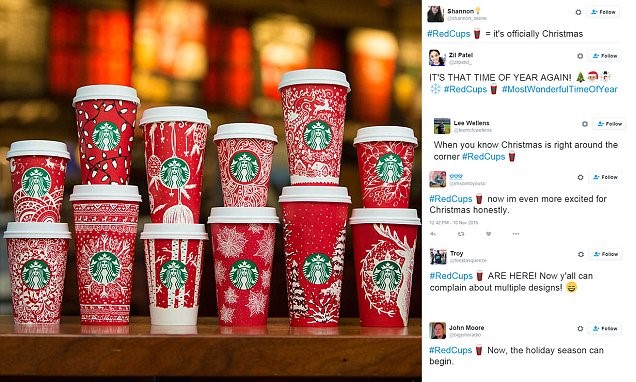
STARBUCKS’ VISION, MISSION AND CORE VALUES
Starbucks vision statement is;
“To establish Starbucks as the most recognized and respected brand in the world and become a national company with values and guiding principles that employee could be proud of”
The vision statement vividly outlines the company’s aspirations or long-term goals, one can observe its clarity, brevity, and ability to inspire, particularly in its pursuit of maintaining the company’s top position in the industry. Furthermore, the company directs its vision towards employee satisfaction to ensure their happiness and contentment.
Starbucks Mission Statement is;
“Establish Starbucks as the premier purveyor of the finest coffee in the world while maintaining our uncompromising principles while we grow.”
To elaborate on this aspect of its mission statement, Starbucks fosters a culture reminiscent of a small company, prioritizing warmth and camaraderie among its staff and other stakeholders. Consequently, this warmth and small-scale ethos permeate interactions with customers.
Analyzing the Mission Statement Component
Starbucks mission statement is needed to be analyzed to see the total number of
Mission component it has.
No. | COMPONENT | YES/NO |
1 | Customers | Yes |
2 | Products or services | Yes |
3 | Markets | Yes |
4 | Technology | No |
5 | Concern for survival, profitability and | Yes |
6 | Philosophy | Yes |
7 | Self-Concept | Yes |
8 | Concern for public image | Yes |
9 | Concern for employees | No |
This mission statement is commendable, but it could benefit from two additional components: technology and employee welfare. It’s crucial for the company to assess its technological prowess and ensure it remains cutting-edge. Additionally, while the vision statement expresses concern for employees, explicitly incorporating this into the mission statement would reinforce its commitment to staff well-being.
Starbucks core values;
Starbucks stands by fundamental principles such as collaboration, honesty, cultural respect, and resilience. These core values serve as guiding principles, ensuring the company stays true to the aspirations outlined in its mission and vision statements.
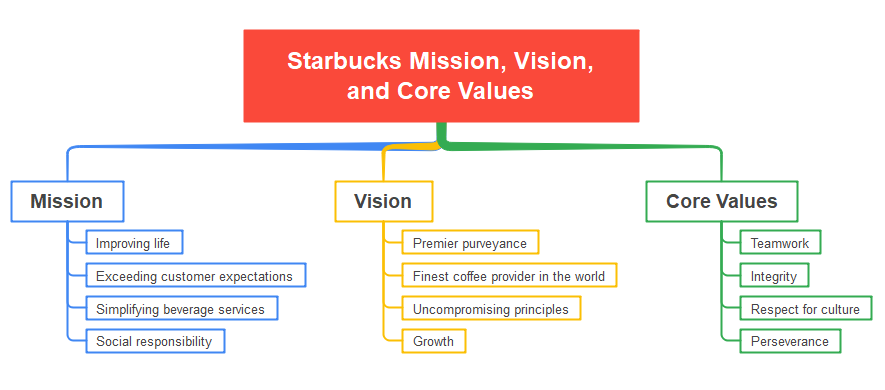
SWOT ANALYSIS OF STARBUCKS
Strengths:
- Strong Brand Image and Loyalty: Starbucks enjoys widespread recognition and loyalty among consumers globally, with extensive footprints and consistent queues at its outlets indicating its popularity and commitment to customer satisfaction.
- Elevated Coffee Experience: Starbucks has transformed coffee into a luxury indulgence rather than a mere necessity, symbolizing its premium positioning and strong brand identity. Its diverse product offerings and effective PR efforts contribute to its status as one of the world’s most valuable brands.
- Robust Financial Performance: With an impressive annual turnover and profit, Starbucks maintains a solid financial standing in the market, driven by sustained consumer demand and continuous expansion initiatives, evident in its rapidly growing number of stores worldwide.
- Global Supply Chain Excellence: Starbucks has perfected its supply chain management, ensuring a seamless flow of high-quality coffee beans sourced from around 30 countries. This enables the company to consistently meet customer demands and maintain satisfaction levels.
- Product Innovation and Acquisitions: Starbucks continually diversifies its product range, introducing new offerings like coffee-flavored ice cubes and seasonal favorites such as the pumpkin spice latte. Strategic acquisitions, including Seattle’s Best Coffee and Teavana, have further strengthened its market position.
- Employee Welfare Focus: Recognized as a top employer, Starbucks prioritizes its workforce’s well-being, earning accolades for its employee-centric approach and efforts to ensure respect, safety, and fair compensation for its staff.
- Quality and Consistency: Renowned for its premium blends and standardized products, Starbucks maintains exceptional quality and consistency across its global network, contributing to its sustained growth and customer satisfaction.
Weaknesses:
- Premium Pricing: Starbucks products typically command higher prices compared to competitors, potentially alienating price-conscious consumers and driving them towards more affordable alternatives.
- Replicability: The widespread availability of coffee and similar offerings from competitors poses a challenge to Starbucks’ uniqueness and brand differentiation, necessitating innovative strategies to maintain its competitive edge.
- Volatile Supply Costs: Fluctuations in the cost of raw coffee beans directly impact Starbucks’ product prices, potentially leading to customer dissatisfaction and reduced profitability, especially during periods of significant price hikes.
- Product Recalls: Instances of product recalls due to allergen contamination or other safety concerns can tarnish Starbucks’ brand image and erode consumer trust, highlighting the importance of stringent quality control measures.
- Unhealthy Menu Choices: Many Starbucks menu items are high in calories and sugar, raising concerns about their health implications and the need for healthier alternatives to appeal to health-conscious consumers.
Opportunities:
- Product and Business Diversification: Starbucks can explore diversifying its product range and business operations to enhance revenue opportunities, including expanding into new food and beverage categories and offering healthier options.
- Market Expansion: Leveraging its success in China and other international markets, Starbucks can pursue further global expansion, particularly in emerging economies like India and Africa, to tap into new consumer bases and drive growth.
- Collaborations with Brands: Partnering with other brands through cross-promotion and co-branding initiatives presents opportunities for Starbucks to broaden its market reach and strengthen its brand presence.
- Adaptation to Latest Trends: By staying abreast of evolving consumer preferences and market trends, Starbucks can continue to innovate its product offerings and develop new flavors and experiences to retain and attract customers.
- Price Differentiation Strategies: Introducing cost-effective options alongside premium offerings can help Starbucks appeal to a wider range of consumers while maintaining its premium brand image and profitability.
- Coffee Delivery Service: Capitalizing on the growing trend of online food delivery services, Starbucks can enhance convenience for customers by partnering with delivery platforms or launching its own delivery service.
- Online Platform Development: With the increasing shift towards online business, Starbucks can focus on promoting and expanding its online platform to boost sales and customer engagement.
Threats:
- Competition from Affordable Alternatives: Competing coffee retailers offering similar products at lower prices pose a threat to Starbucks’ market share and profitability, necessitating strategies to address price differentials and maintain customer loyalty.
- Supply Chain Challenges: Disruptions in the coffee bean supply chain due to factors like crop decline, adverse weather conditions, or supplier strikes can impact Starbucks’ operations and profitability, highlighting the importance of supply chain resilience.
- Imitability: Basic coffee offerings are easily replicable by competitors, posing a challenge to Starbucks’ brand uniqueness and necessitating efforts to differentiate its offerings through authenticity and quality.
- Changing Consumer Behavior: Shifts in consumer preferences and spending patterns, exacerbated by factors like the COVID-19 pandemic, can affect Starbucks’ sales and growth prospects, requiring adaptability and responsiveness to changing market dynamics.
- Local Competitors: Locally-owned cafes and small restaurants emphasizing community engagement and personalized experiences pose a threat to Starbucks’ dominance, necessitating strategies to compete effectively at the local level while preserving its brand image.
- Rising Coffee Bean Prices: Escalating costs of raw coffee beans can adversely impact Starbucks’ profitability, necessitating effective cost management strategies and potentially leading to price increases that may deter price-sensitive customers.
- By addressing these strengths, weaknesses, opportunities, and threats, Starbucks can navigate the competitive landscape and sustain its growth trajectory while meeting evolving consumer demands and market challenges.

The Frappuccino effect
Ever pondered whether the presence of a nearby Starbucks could impact the value of your home? A study conducted by Zillow in 2015 revealed a fascinating trend: homes situated within a short walking distance of a Starbucks experienced a remarkable 96 percent increase in value between 1997 and 2014. In contrast, the average appreciation for all U.S. homes during that period was 65 percent.
But does Starbucks truly influence the surge in real estate prices? One theory suggests that the presence of a Starbucks may signal neighborhood improvement or increased safety, a key consideration for many prospective homebuyers. Additionally, the desire for nearby restaurants and cafes among homebuyers often aligns with Starbucks’ ubiquitous presence.
Another factor to consider is Starbucks’ strategic approach to selecting store locations. While the company employs a team of analytics experts to analyze various factors such as traffic patterns and local businesses, regional teams also play a crucial role in decision-making regarding store locations and design.
Regardless of the driving force behind this phenomenon, one cannot overlook the pivotal role of data. Zillow utilized data analysis to enhance its business operations, while Starbucks’ success in opening new branches owes much to data analysis. Ultimately, these insights underscore the transformative power of data, which serves as the catalyst for innovation, scientific discovery, and business advancement.
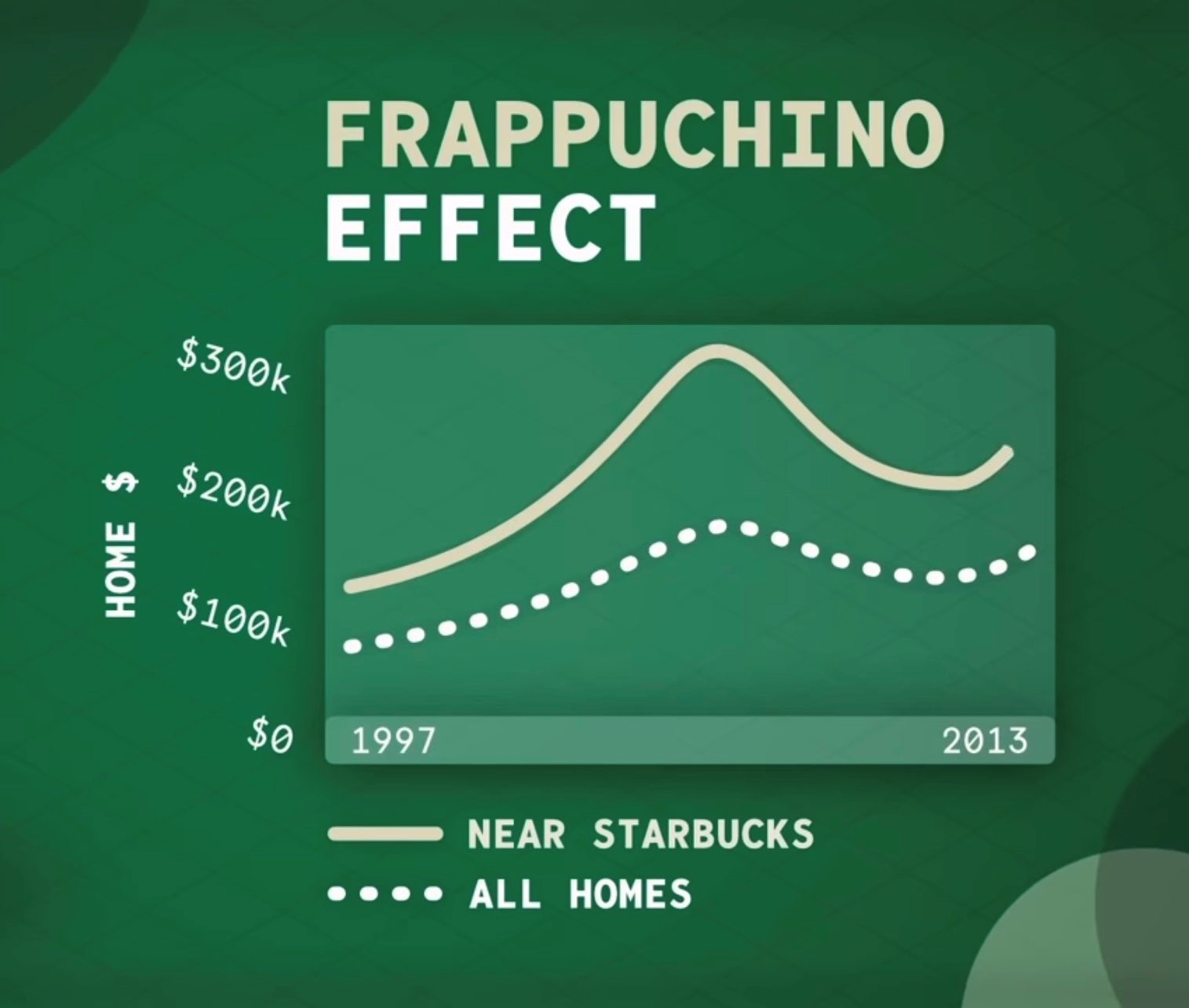
Future Plans of Starbucks
“India’s strategic importance as one of Starbucks’ fastest-growing markets globally will see Starbucks doubling-down on its presence in the market,” the company said in a statement.
Tata Starbucks Private Ltd. has revealed its ambition to increase its presence in India by opening 1,000 stores by 2028, translating to the opening of one new store every three days. Additionally, the company intends to double its employee count within the same timeframe.
In order to reach its goal of having 1,000 stores by 2028, the company plans to increase its workforce to around 8,600 employees, expand its presence into tier-2 and tier-3 cities in India, and enhance its drive-thru offerings at airports and 24-hour store locations to better cater to customer needs.
Conclusion
In summary, Starbucks has secured its market leadership position through its expansive global footprint and effective leadership. The unique experience offered at Starbucks locations, characterized by a cozy atmosphere, welcoming ambiance, and exceptional service, sets it apart from competitors and provides a sustainable competitive advantage. Leveraging strategies such as strategic retail locations and on-site partnerships, Starbucks has solidified its position as a market leader in the mature coffee industry. With a comprehensive marketing strategy in place, Starbucks continues to maintain its strong market position.
Thank you for your interest and for reading!




